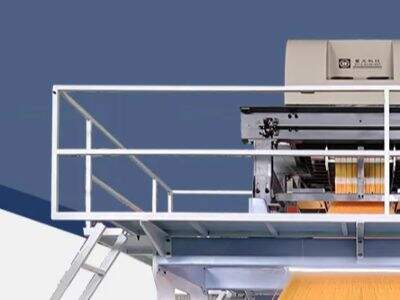Regular Cleaning and Lubrication:
Your fabric-making machine will require frequent cleaning to ensure that it is operating at its very best and free from damage. Use a clean, soft cloth to gently wipe dust and dirt from the a loom outside of the machine. Be sure to inspect the inside of your machine for any stray threads or fabric fibers that may have caused issues.
It is equally important that you lubricate your machine to ensure that everything is functioning properly. Before you start making fabric, make sure the moving parts of your fabric maker are well-oiled with a special oil made exclusively for sewing machines. Doing so can reduce friction, and keep your machine in quiet operation as well as efficiently run.
Checking for Wear and Tear:
The second most important thing to do is, inspect your fabric making machine carefully for wear and tear. Such as an inspection for damage of any kind: broken or bent, or checking the stitching to see that it is still tight and secure. In case you see any issues, get them fixed immediately; otherwise, they can harm the machine.
Following Manufacturer's Guidelines for Maintenance:
You should also check your fabric machinery per how the manufacturer told you to maintain it. These instructions will also inform you as to how frequently to clean and lubricate the machine and what other maintenance must be undertaken. By following these tips, you can make sure your device lasts longer and keeps running smoothly.
Because when these bags are not in use then they should be stored properly.
When not in use, it is crucial to store the fabric fabric making machine safely so that it does not suffer from dust, dirt or breaks of any kind. You can cover the device to prevent it from collecting dirt and debris or you can store it in a case. Keeping the machine in a moisture free place will also help prevent rust and all of the other undesirable things that are brought on with time and exposure to dampness.




